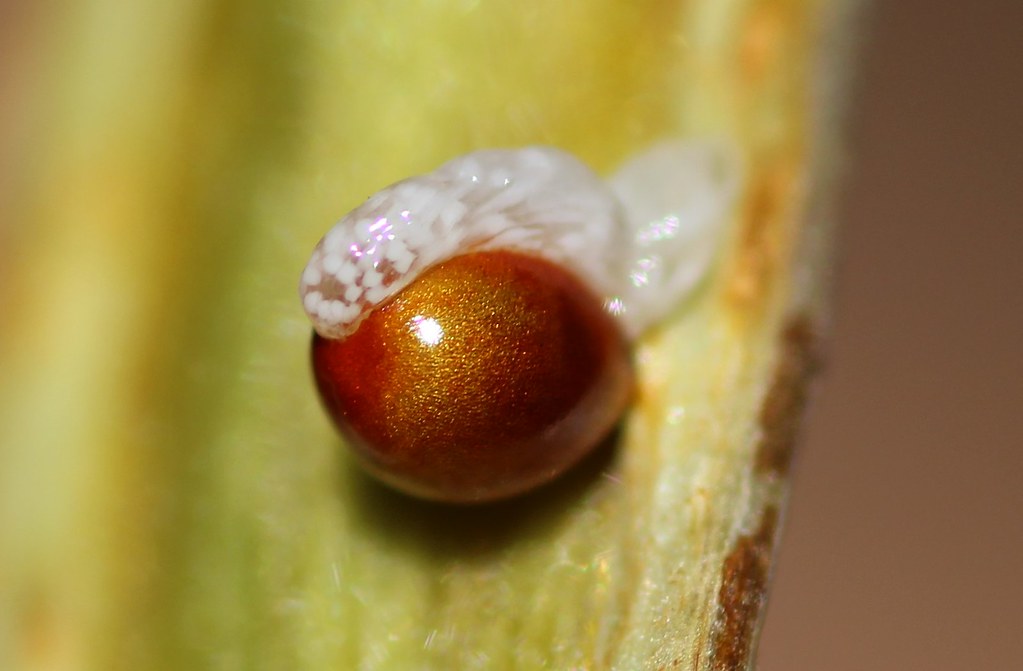Ants and Plants in Your Garden
By Joyce Fry, CAEMG Volunteer
I haven’t always been a fan of ants. My distrust of them began when I was 8 years old and innocently left my Snickers bar on a porch railing for several hours. When I returned later at dusk, I found it covered in the little varmints, but not before I put it to my mouth! Lesson learned the hard way! This was but my first lesson regarding ants i.e., they are scavengers. Different ant species are more attracted to specific substances, such as those that are sweet (those with whom I first connected), provide proteins (insects, carcasses, and slugs), and those that provide lipids (greasy food items, insects).
Since my earlier encounter, I have gained a lot more respect, understanding and even appreciation for them. As a gardener, I learned that some species “farm” aphids. They actively move aphids around on plants and harvest the aphid’s exudate, also known as “honeydew,” a sweet sticky substance on which they and their larvae feed. Some ant species are known to farm caterpillars, taking them to various plant food sources, and even into their chambers. Caterpillars return the favor, providing ants with their droppings or “frass.” Behavior such as this between two or more different species is called “mutualistic symbiosis” i.e., neither is harmed in the process and both benefit.
As if those mutualistic relationships aren’t amazing enough, some ant species feed on a fleshy specialized structure, called an elaiosome (ee-LAY-oh-sohm), which is attached to the seeds of some plant species. The word, elaiosome, is from the ancient Greek for “oil,” and “body.” One source likened it to that of a potato chip, and after all, who can eat just one? Unlike potato chips, however, elaiosomes are rich in protein, as well as lipids. Many of our native wildflowers depend on ants to help distribute and “plant” their seeds. This type of seed dispersal is called myrmecochory (mur-mee-koh-KOR-ee), which is Greek for “ant” (myrmex) and “circular dance” (khoreíā). The remaining seed is usually coated with a hard and slippery layer, so ants are unlikely to eat it. Instead, they discard the seed on their “compost heap,” which is essentially where their waste or debris is stored. This makes them effectively decomposers, breaking down dead plants and animals and spreading around the resulting nutrients. The seed germinates in the decaying pile, benefiting by the availability of nutrients. The ants’ tunneling produces additional plant benefits by aerating the soil and forming channels through which water can flow. This arrangement is perfect for the spread of beautiful wildflowers and additional food resources for the ants that “planted” them. A few Kentucky wildflowers that produce elaiosomes are trillium (Trillium spp.), bloodroot (Sanguinaria canadensis), dutchman’s breeches (Dicentra cucullaria), trout lily (Erythronium americanum), wild ginger (Asarum canadense), violet (Viola spp.), hepatica (Hepatica spp.), bleeding heart (Lamprocapnos spectabilis), squirrel corn (Dicentra canadensis), and celandine poppy (Stylophorum diphyllum).
Most people don’t think of ants as pollinator species, yet ants can be a secondary pollinator species. Because their bodies are covered in setae (insect hair with sensory organs at its tips), pollen may stick to them as they travel from flower to flower. As do all pollinator species, they help to diversify the genetic makeup of plants, thus fortifying their vigor. However, because ants also secrete an antibiotic substance as protection from bacteria, it may kill the pollen before it can be transferred to another plant.
Ants are scavengers, farmers, hunter/gatherers, decomposers, and pollinators as well as pests in our gardens. Like all components of an intact ecosystem, ants play a crucial role in the cycle of life. So, before you freak out when you discover ants among your plants, observe their behavior and contemplate the benefits first. You may decide not to freak out at all!


